Our Approach to Insect Pests
Chip-N-Dale’s Landscaping takes a proactive, comprehensive approach toward insect pest control, emphasizing prevention first, then effective treatment if necessary. The first line of defense is a systematic insecticide application during the spring, before the hot weather sets in and insect populations surge. This strategic timing ensures that the plants are protected before pests become more active. This approach allows the plant roots to take up the chemicals, creating a systemic defense against pests from within the plant itself. We highly recommend you request and include this form of preventative insurance into your yearly maintenance service contract. We also promote vigilance among our onsite crew members and encourage them to be observant for any signs of insect infestations in the landscape. By promptly noticing symptoms such as wilting leaves, discoloration, or unusual pest activity, we can address potential issues early on. By combining timely insecticide application, vigilance and effective remedies, Chip-N-Dale’s Landscaping effectively makes every effort to safeguard your landscape, ensuring healthy and vibrant plants free from harmful insect pests.
Following are the most common insect pests that prey upon our landscape plants and trees:

Aphids
Aphids, small sap-sucking insects belonging to the superfamily Aphidoidea, are a common nuisance in Southern Nevada landscapes. These small sap-sucking creatures typically measure 1 to 3 millimeters in length and come in various colors such as green, brown, black, or pink. They possess soft bodies and often cluster on the undersides of leaves or the tips of new growth. Infestations of aphids can lead to various plant symptoms, including curling or yellowing of leaves, stunted growth, and the appearance of a sticky substance known as honeydew, which can encourage the growth of black sooty mold. To remove aphids, several natural remedies can be employed, such as spraying plants with a strong stream of water, introducing beneficial insects like ladybugs or lacewings, or applying insecticidal soap or neem oil. The peak season for aphids typically occurs in the spring and early summer when temperatures rise, providing ideal conditions for their rapid reproduction. Regular monitoring and prompt action can help prevent significant damage and keep aphid populations under control.
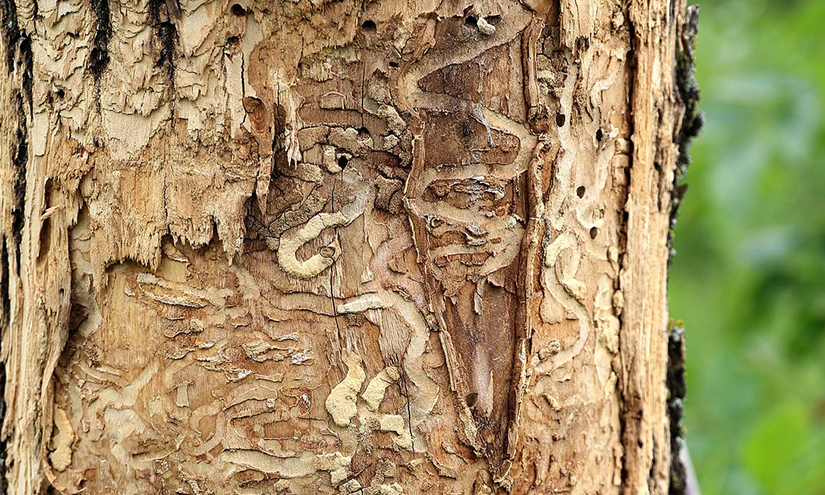
Borers
Borer insect pests are a group of insects that can cause significant damage to trees in our climate. These pests come in various species, such as the emerald ash borer, Asian longhorned beetle, and bronze birch borer, among others. Borers typically have elongated bodies, often resembling cylindrical or flat-headed larvae. They arrive at different times of the year, depending on the species and their life cycle. Adult borers lay their eggs on or near the bark of trees, and when the eggs hatch, the larvae bore into the tree, feeding on the inner tissues and creating tunnels, or galleries, as they go. This tunneling disrupts the tree’s nutrient and water flow, leading to various symptoms such as wilting leaves, dieback of branches, and increased susceptibility to disease. In severe infestations, borers can cause structural weaknesses, making trees more susceptible to breakage and wind damage. To remedy borer infestations, it is essential to detect them early. Once borers are established in a tree (particularly in the central trunk), it can be challenging to treat effectively. Treatment methods may include insecticidal sprays, trunk injections, or systemic insecticides, but these are most effective when applied preventatively. Preventing borer infestations is key to preserving tree health. Regularly inspecting trees for signs of borer activity, promptly removing and destroying infested branches, and keeping trees healthy through proper watering, fertilization, and pruning can help prevent borers from infesting and damaging trees in the first place.
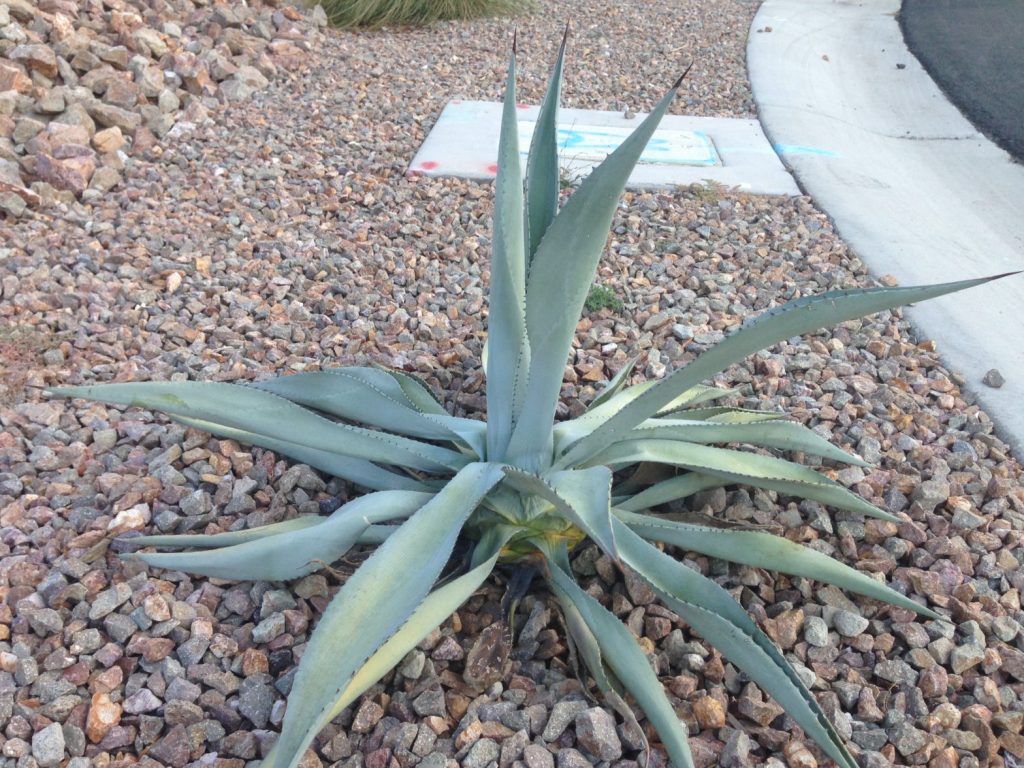
Grubs
Grubs in the garden are the larval stage of various beetle species, such as Japanese beetles, June bugs, and masked chafer beetles. They are typically C-shaped, creamy white in color, and have a distinct brown head capsule. Grubs are voracious feeders and can cause severe damage to plant roots, disrupting their ability to absorb water and nutrients, and making them more susceptible to other stresses and diseases. Grubs usually arrive during the warmer months when adult beetles lay their eggs in the soil. Symptoms of grub infestations on trees and plants include wilting, yellowing, and overall decline in health due to root damage. Agaves, popular succulent plants in our desert landscapes, readily fall victim to grub feeding, leading to weakened, wilted outer leaves and stunted growth. Applying preventative systemic insecticides labeled specifically for grub control is the key to keeping these pests at bay.
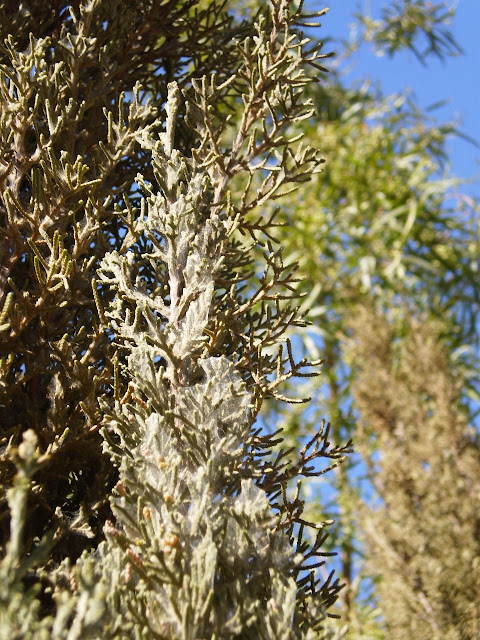
Spider Mites
Spider mites are tiny arachnid-like pests that are so small that they are often difficult to see with the naked eye. Spider mites feed on plant sap, puncturing the plant cells and sucking out the contents. They arrive during hot and dry conditions, where they reproduce rapidly and move from plant to plant in the landscape. In the case of their favorite targets of Italian cypress and junipers, spider mites can cause a noticeable “dusty” discoloration and fine webbing between branches. Severe infestations can lead to leaf curling, yellowed leaves, stunted growth, and eventual plant death. To control spider mites, regular monitoring of plants is essential to detect early signs of infestation. Applying a strong jet of water to plants every two weeks during our hot summer months can help dislodge and control the mites. Preventing spider mites involves maintaining proper landscape hygiene, avoiding over-fertilization, and ensuring proper watering to reduce plant stress. Keeping plants well-maintained and healthy can improve their resilience against spider mite attacks.
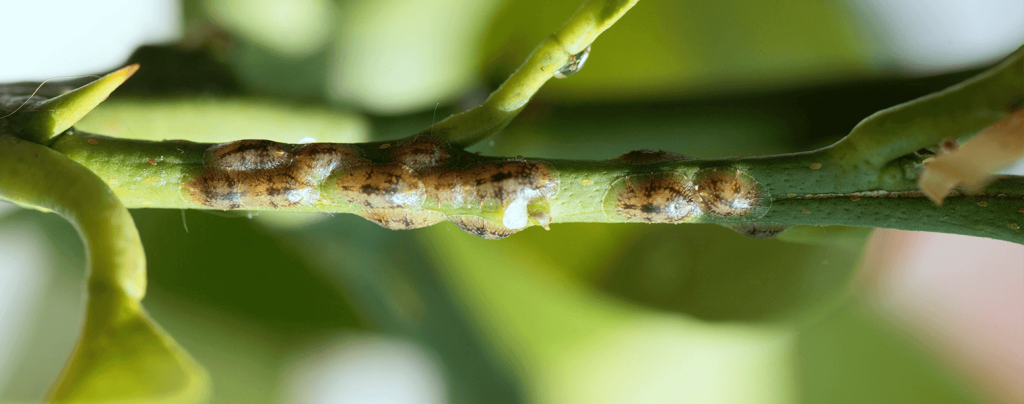
Scale
Scale insects are named after their protective waxy covering or shell-like scale, which varies in color and size depending on the species. These pests can arrive throughout the year, as they reproduce rapidly in warm conditions. When infesting plants, they feed on sap by piercing plant tissues with their needle-like mouthparts, causing weakening, yellowing, and wilting of leaves. Heavy infestations can lead to stunted growth, premature leaf drop, and even plant death. Remedies for scale insects typically involve using horticultural oils or insecticidal soaps to suffocate and kill the pests. Pruning heavily infested branches can also help reduce their population. Natural predators like ladybugs and parasitic wasps can provide biological control. Regularly inspecting and cleaning plants, especially the undersides of leaves, is crucial to detect and manage scale insects before they cause severe damage.
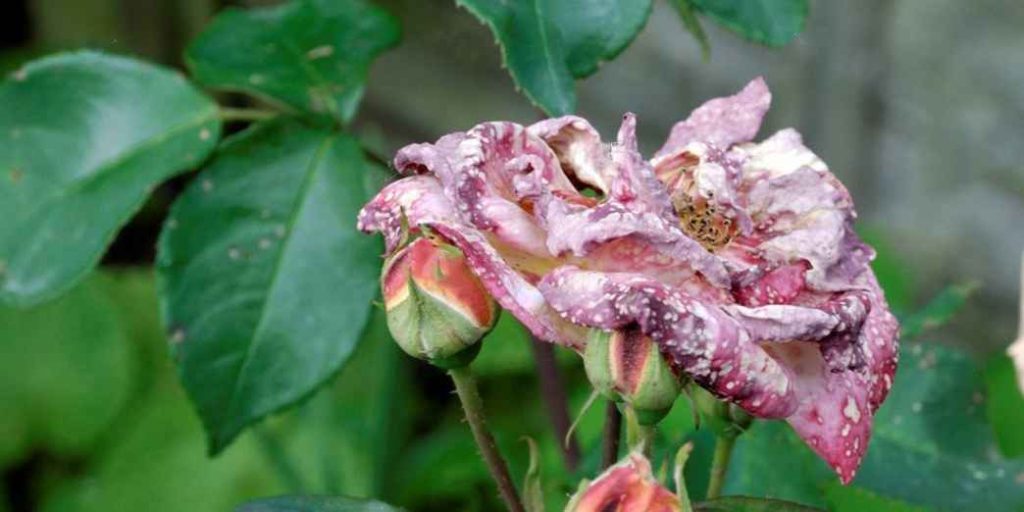
Thrips
Thrips are tiny, slender insects that measure about 1 to 2 mm in length, making them barely visible to the naked eye. When they arrive in a garden or on plants, it is often during warmer months, as they thrive in higher temperatures. Thrips feed by piercing plant tissues and sucking out the cell contents, leaving behind characteristic silver or bronze streaks on leaves and flowers. Besides the visual damage, they can also cause distortion and stunted growth in plants. Additionally, thrips are notorious carriers of plant viruses. To control thrip infestations, it’s crucial to implement integrated pest management strategies. These may include removing and destroying infested plant parts, encouraging natural predators like ladybugs and lacewings, applying neem oil or insecticidal soaps, and, in severe cases, resorting to targeted insecticides.
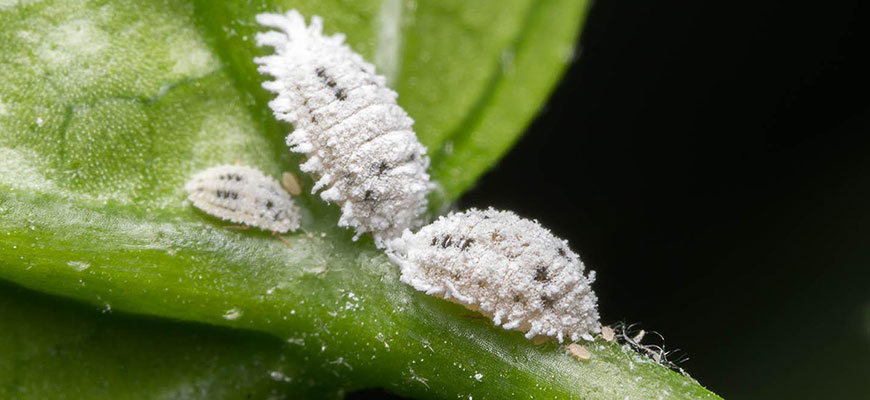
Mealybugs
Mealybugs are small, soft-bodied insects covered with a white, powdery wax that gives them a mealy or cottony appearance. Mealybugs typically arrive in gardens or on plants during warmer months, as they thrive in mild to hot conditions. These pests feed on plant sap by inserting their piercing-sucking mouthparts into plant tissues. The damage they cause includes yellowing and wilting of leaves, stunted growth, and distorted plant development. Similar to scale insects, mealybugs also excrete honeydew, a sticky substance that attracts ants and can lead to the growth of sooty mold on plant surfaces. Physical removal by using a strong stream of water can be effective for small infestations. Additionally, wiping the pests off with a cotton swab dipped in rubbing alcohol can help. Neem oil and insecticidal soaps are also effective remedies to combat mealybugs. For larger infestations, introducing natural predators like ladybugs or lacewings can provide biological control. Regularly inspecting plants and isolating new arrivals before introducing them to the garden can help prevent mealybugs from spreading. Maintaining good plant hygiene and proper cultural practices, such as providing adequate sunlight and avoiding overwatering, can contribute to the overall health and resilience of plants against mealybug attacks.
